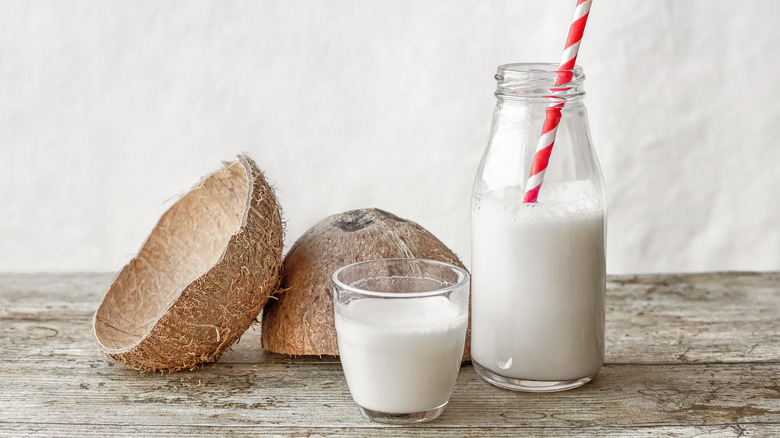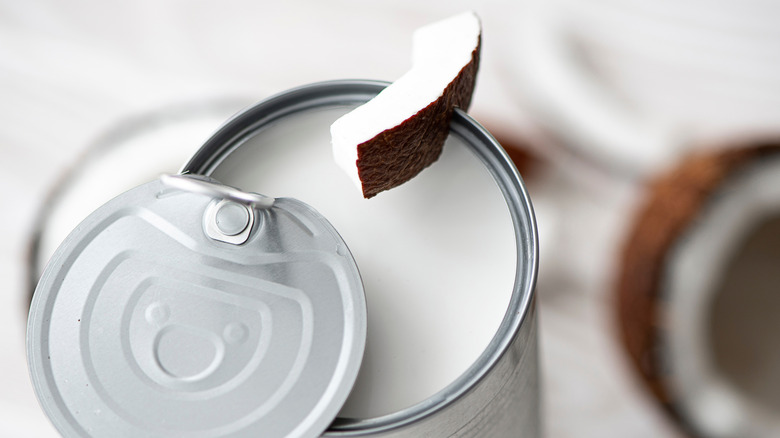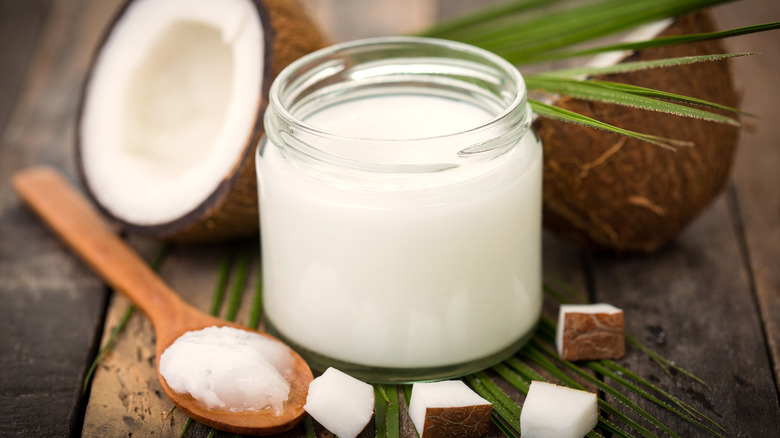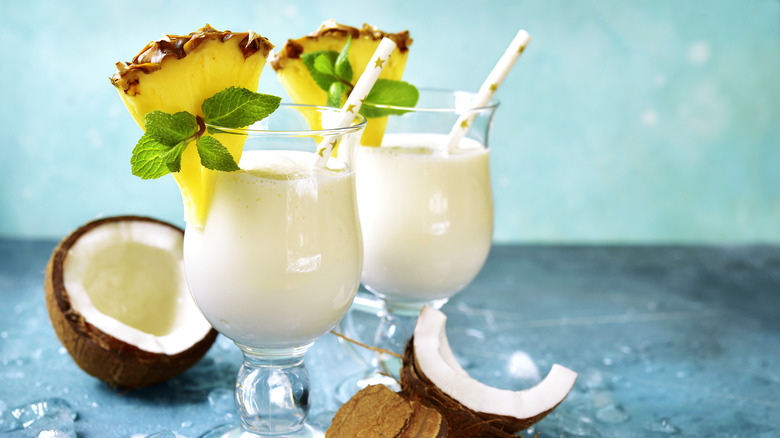What's The Difference Between Coconut Milk And Coconut Cream
Don't go (coco)nuts, we're here to explain
If coconut curry is on the menu tonight, chances are you'll be swinging by your local market to pick up some coconut milk, garlic and curry powder. To your surprise, though, you might encounter several types of liquid coconut products available, including boxed and canned coconut milks, coconut cream and cream of coconut. And despite what you may think, it does actually matter which one you choose, since differences in things like fat content and texture will affect your recipe substantially.
RELATED What the Hell Is Coconut Bacon and Should You Be Eating It? "
But don't panic—we're here to help. Plus, you might even discover your new favorite nondairy substitute along the way.
Refrigerated Carton Coconut Milk
This is what you'll find on the shelves next to other lactose-free options like almond, soy, rice, oat and cashew milks. It's different than the canned coconut milk just a few aisles over and is best used over your morning bowl of Cheerios or blended into your breakfast smoothie.
Canned Coconut Milk
The main difference between canned coconut milk and the stuff you buy by the carton is the amount of water present. Your standard boxed coconut milk is much more diluted than what you'll find in the can. Canned coconut milk is a key ingredient in many Asian dishes and can also be used for a variety of savory and sweet recipes like stews, curries, cakes, puddings and pies.
Coconut Cream
Coconut cream contains a lot less water than coconut milk and the higher fat content gives it a smooth, thick and rich consistency. It also is a great option for folding into soups and making vegan whipped cream.
Cream of Coconut
Don't let the wording fool you—cream of coconut is actually quite different than coconut cream, due to its added sugar content. Since it's often very sweet, this is a better option for desserts and tropical cocktails like piña coladas.




